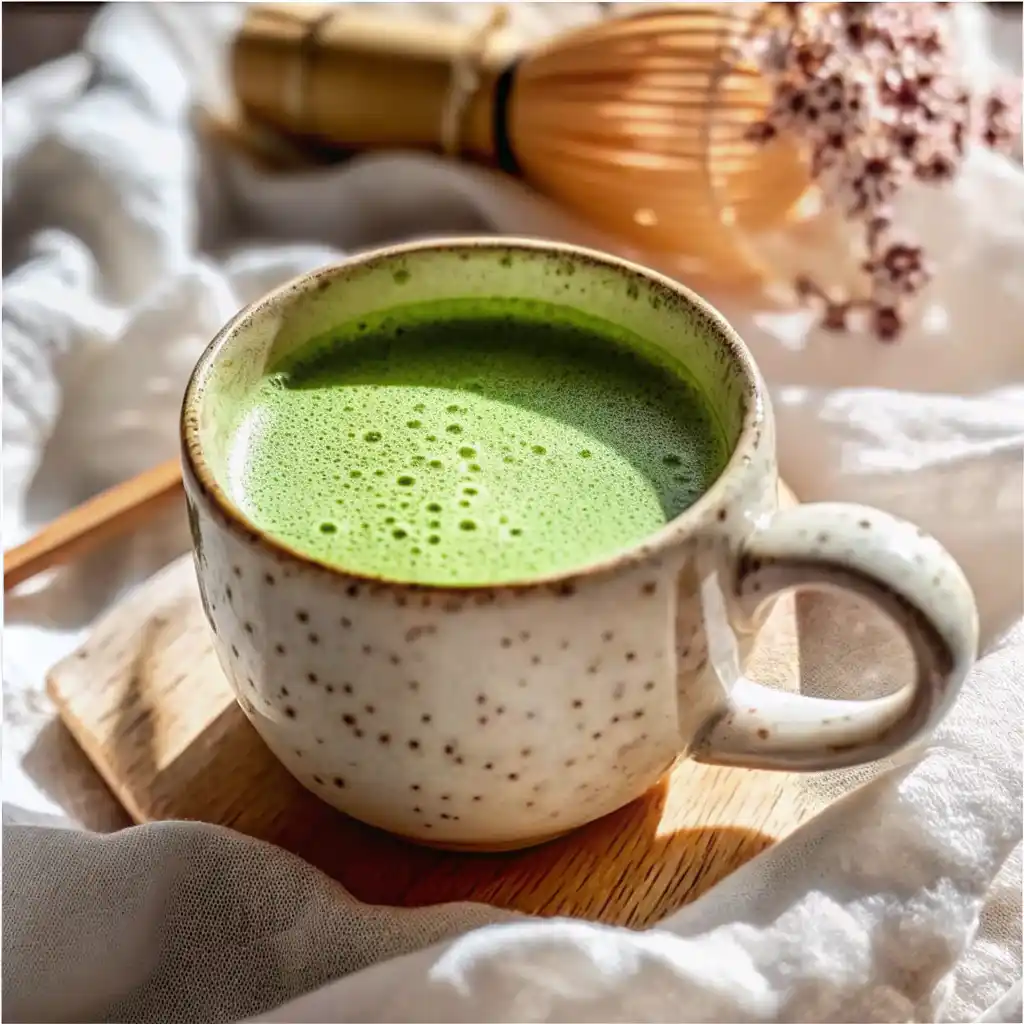My journey with food began long before I discovered the Japanese Mounjaro recipe, but the moment I first tried it, I knew it would become something special in my kitchen. With its calming aroma and earthy blend of herbs, this traditional drink quickly became a comforting staple in my wellness routine.
I grew up in a tiny sunlit kitchen tucked in a coastal town, where meals were made with heart and herbs were as common as salt. My mother believed food was more than nourishment—it was connection. And I’ve carried that belief with me ever since.
Years later, while researching natural wellness traditions, I came across the Japanese Mounjaro recipe—a centuries-old herbal drink known for its metabolism-boosting and detox-supporting properties. What drew me in wasn’t just the health claims, but the simplicity and purpose behind it.
More than just a tea, the Japanese Mounjaro recipe is a reflection of mindful living—blending tradition, healing, and intention in each cup.
Discover great ideas like Easy Natural Mounjaro Tea Recipe to complement your wellness journey.
Table of Contents
PART 1: Introduction to Japanese Mounjaro
What Is a Japanese Mounjaro Recipe?
The Japanese Mounjaro recipe is more than a drink—it’s a centuries-old wellness tradition. Known for its detoxifying and metabolism-supporting properties, this herbal infusion has its roots in ancient Japanese remedies passed down through generations. Unlike conventional teas or trendy weight-loss potions, Mounjaro is crafted with purpose and purity.
Typically, it blends roasted grains like barley, fermented tea leaves, natural roots, and digestive-friendly herbs into a soothing beverage. What makes it stand out is its simple ingredient list with complex benefits—designed to naturally balance energy, reduce cravings, and support internal cleansing.
In Japan, these recipes were once reserved for healing rituals and seasonal resets. Today, the Japanese Mounjaro recipe is seeing a revival—especially among those embracing mindful, holistic lifestyles.
While the ingredients may vary slightly from one region to another, the foundational approach remains the same: support the body from within using earth-grown components. That’s what makes it both timeless and adaptable.
Check out Natural Mounjaro Recipe for another way to enjoy this ancient remedy at home.
Why Japanese Mounjaro Has Gained Global Popularity
There’s a reason the Japanese Mounjaro recipe is turning heads across the health and wellness world. In a time when people are actively seeking natural solutions over synthetic ones, Mounjaro offers a clean, authentic option. It’s not just what’s in the cup—it’s what it does to your body and mind.
Here’s why the world is tuning into this herbal marvel:
| Benefit | What It Does |
|---|---|
| Supports metabolism | May aid in fat burning and reduce bloating |
| Curbs appetite naturally | Herbal compounds can help reduce cravings |
| Promotes gut health | Fermented and fibrous ingredients nourish the gut |
| Increases calm and clarity | Antioxidants promote balanced energy |
Beyond the physical benefits, Mounjaro taps into something deeper—ritual and routine. Just like a morning matcha or an evening chamomile, it’s a way to reconnect with your body’s rhythms. And it’s flexible. It can be enjoyed hot or cold, sweetened naturally or left earthy and bold.
Its rising popularity has also been fueled by real-world results. Online wellness communities are filled with testimonials about how this tea has become part of users’ daily health practices.
Want to go even deeper into natural detox strategies?
Learn more about Healthy Meal Prep Guide and how you can integrate functional foods with ease.
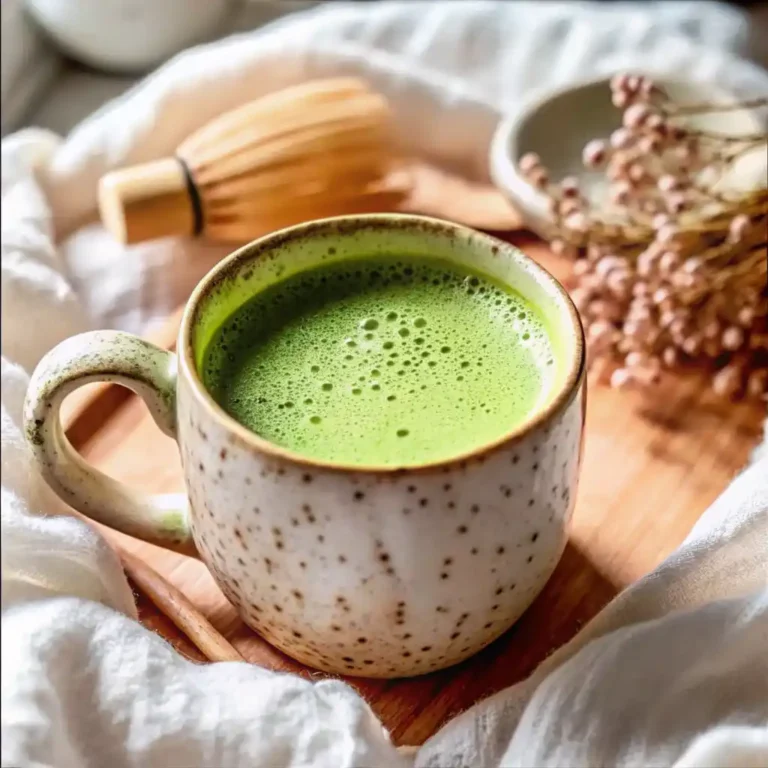
Japanese Mounjaro Recipe: The Ultimate Natural Wellness Guide
This traditional Japanese Mounjaro Recipe blends roasted barley, fermented tea leaves, and digestive-supporting herbs into a warming, earthy drink that supports metabolism, aids digestion, and promotes energy balance. A gentle yet powerful wellness ritual passed down through generations.
- Total Time: 35 minutes
- Yield: 2–3 servings
Ingredients
- 1 tablespoon roasted barley
- 1 teaspoon fermented tea leaves (like hojicha or pu-erh)
- 1 small strip kombu seaweed
- 1 teaspoon dandelion root
- 3–4 thin slices fresh ginger
- 1/2 teaspoon licorice root (optional)
- 4 cups filtered water
Instructions
- Soak kombu in 4 cups of filtered water for 10 minutes in a ceramic or cast iron pot.
- Add roasted barley, fermented tea leaves, and dandelion root to the pot.
- Bring to a gentle boil, then reduce heat and simmer for 25 minutes.
- Add ginger slices halfway through and continue simmering.
- Strain into a mug and sip warm. Optional: add honey or lemon to taste.
- Store extra tea in a glass jar in the fridge for up to 48 hours. Reheat gently before serving.
Notes
Enjoy first thing in the morning or between meals for optimal metabolism and digestion support. Start with one cup per day and increase as desired. Always use organic herbs for best results and avoid boiling kombu to preserve nutrients.
- Prep Time: 10 minutes
- Cook Time: 25 minutes
- Category: Drink
- Method: Simmering
- Cuisine: Japanese Herbal
- Diet: Vegan
PART 2: Core Ingredients in a Traditional Japanese Mounjaro
Natural Herbal Components Used in Mounjaro
What gives the Japanese Mounjaro recipe its healing edge? It’s all about the ingredients—carefully chosen herbs and natural components that have been used in Japanese folk medicine for centuries. Each plays a unique role in cleansing, energizing, or rebalancing the body.
Here are the common ingredients found in a traditional Japanese Mounjaro:
| Ingredient | Function | Benefits |
|---|---|---|
| Roasted Barley | Base flavor and prebiotic support | Gut health, natural energy |
| Fermented Tea Leaves | Supports digestion and fat oxidation | Boosts metabolism, antioxidants |
| Kombu (Seaweed) | Mineral-rich flavor enhancer | Supports thyroid and iodine levels |
| Shiso Leaf | Herbal detox agent | Reduces bloating, boosts immunity |
| Licorice Root | Balancer for bitter herbs | Anti-inflammatory, sweetens taste |
| Dandelion Root | Natural diuretic and cleanser | Liver support, toxin flush |
| Ginger | Circulation booster | Metabolism, digestion |
These components aren’t just thrown together. The recipe follows a natural yin-yang balance of hot and cold energies—a foundational concept in Eastern medicine that aims to harmonize internal processes.
Looking for inspiration? Try this herb-packed Lemon Balm Recipe for Weight Loss that pairs well with Mounjaro principles.
Nutritional Value and Benefits of Each Ingredient
Each cup of the Japanese Mounjaro recipe delivers more than just taste. It’s packed with plant-powered nutrients that support key wellness goals—from appetite control to gentle detoxification.
Here’s a closer look at what you’re getting:
1. Fiber
Roasted barley and fermented elements offer soluble fiber that feeds good gut bacteria, improving digestion and reducing inflammation.
2. Antioxidants
Tea leaves and shiso are rich in catechins and polyphenols—famous for fighting oxidative stress, stabilizing blood sugar, and supporting metabolism.
3. Essential Minerals
Kombu provides iodine and magnesium. Dandelion root delivers potassium. Together, they support hydration, hormonal balance, and kidney function.
4. Natural Thermogenics
Ginger, shiso, and fermented teas stimulate thermogenesis—the body’s way of burning more calories by generating heat.
5. Anti-Inflammatory Properties
Licorice and dandelion soothe the digestive system, reducing bloat, cramps, and inflammation-related fatigue.
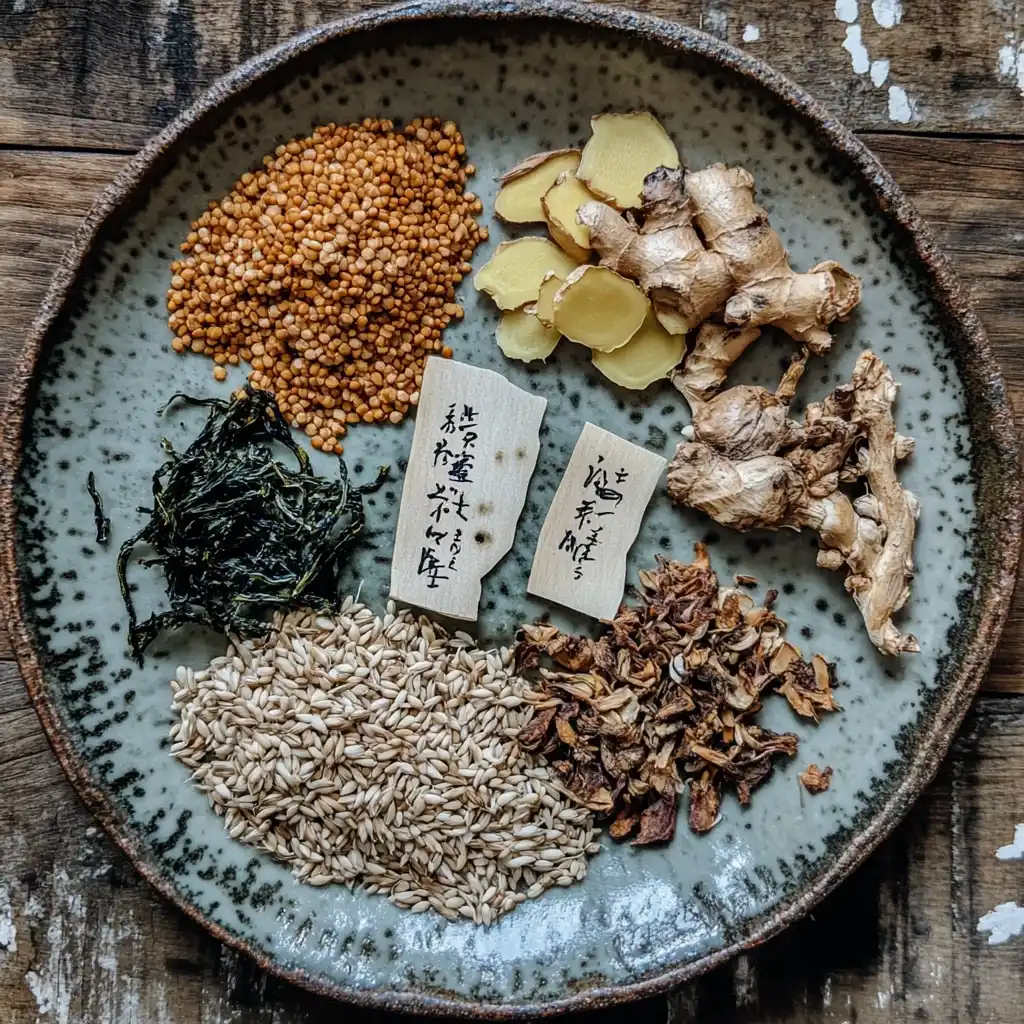
PART 3: How to Make Authentic Japanese Mounjaro Recipe at Home
Step-by-Step Japanese Mounjaro Recipe Preparation Guide
Brewing an authentic Japanese Mounjaro recipe at home is a simple yet meaningful process. Rooted in centuries-old Japanese tradition, this recipe blends natural ingredients to create a tea that supports metabolism, digestion, and overall wellness. Whether you’re new to herbal wellness or a seasoned tea lover, preparing this drink is a calming ritual that delivers lasting benefits.
Here’s the step-by-step process to make your own Japanese Mounjaro recipe:
Ingredients:
| Ingredient | Amount |
|---|---|
| Roasted barley | 1 tablespoon |
| Fermented tea leaves | 1 teaspoon (like hojicha or pu-erh) |
| Kombu seaweed | 1 small strip |
| Dandelion root | 1 teaspoon |
| Fresh ginger | 3–4 thin slices |
| Licorice root (optional) | 1/2 teaspoon |
| Water | 4 cups |
Instructions:
- Start with the base
Place the kombu in a pot with cold water and soak for 10 minutes. This seaweed gives the Japanese Mounjaro recipe its trace minerals and umami depth. - Add core herbs
Stir in roasted barley, fermented tea leaves, and dandelion root. These ingredients are key to the flavor and function of the Japanese Mounjaro recipe. - Simmer slowly
Bring the mixture to a low boil, then reduce the heat and let it simmer gently for 25 minutes. Halfway through, add ginger slices for an extra thermogenic boost. Ginger is essential to any complete Japanese Mounjaro recipe. - Strain and serve
Once ready, strain the tea into a ceramic mug. Sip it slowly—especially on an empty stomach for maximum benefit. - Add your twist
You can personalize your Japanese Mounjaro recipe with lemon juice, raw honey, or mint for added taste and health value.
Store leftover tea in a glass container and refrigerate for up to 48 hours. Reheat without boiling to preserve the herbal properties.
Don’t miss our Green Tea Drink Recipe for a Healthy Boost that pairs well with your Mounjaro routine.
Kitchen Tools and Brewing Tips for the Best Japanese Mounjaro Recipe
To truly enjoy your Japanese Mounjaro recipe, a few tools can help bring out the best flavor and benefits.
| Tool | Purpose |
|---|---|
| Ceramic or cast iron pot | Helps evenly extract herb nutrients |
| Fine mesh strainer | Removes particles for a clear brew |
| Wooden spoon | Gentle stirring to protect ingredients |
| Tea thermos | Keeps your tea warm without reheating |
Brewing Tips:
- Always use filtered water to let the flavors of your Japanese Mounjaro recipe shine.
- Choose fresh, organic herbs for stronger health effects.
- Don’t skip kombu—it enhances mineral absorption and balances the bitterness.
- Let your tea rest for a minute before sipping. The scent is part of the Japanese Mounjaro recipe experience.
This is more than just a tea—this is a daily ritual. Making a Japanese Mounjaro recipe at home invites mindfulness and balance into your day.
Looking for inspiration? Try Iced Matcha Latte Guide for a cool companion to your Mounjaro tea.
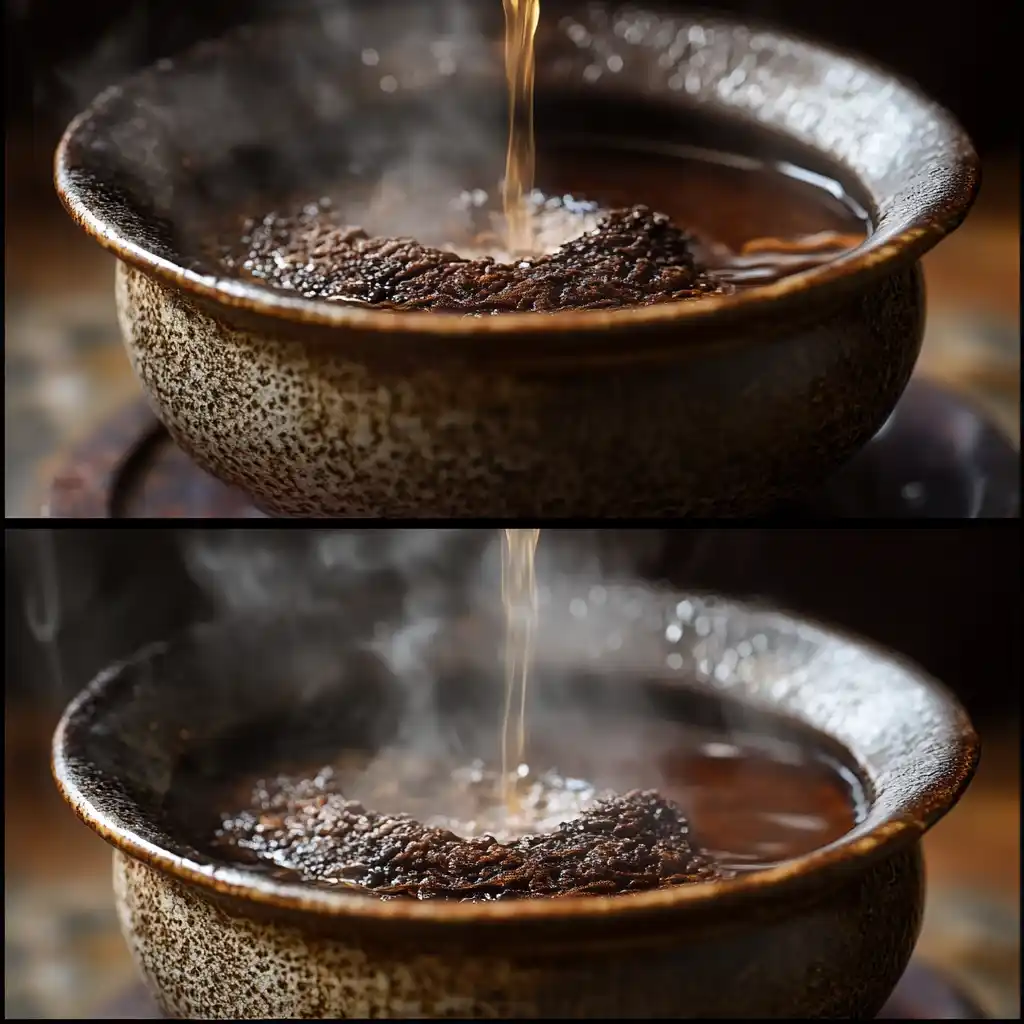
PART 4: Health Benefits of the Japanese Mounjaro Recipe
Weight Loss and Metabolism Boosting Properties
One of the main reasons people turn to the Japanese Mounjaro recipe is its reputation for aiding weight loss. But unlike trendy supplements filled with artificial ingredients, this traditional drink takes a natural, gentle approach to metabolic support.
The unique combination of roasted barley, fermented tea leaves, and dandelion root works synergistically to stimulate thermogenesis—your body’s process of producing heat to burn more calories. When consumed regularly, this metabolism-boosting tea may help the body burn fat more efficiently, especially when paired with a balanced diet and light physical activity.
Here’s a breakdown of the metabolic benefits found in the Japanese Mounjaro recipe:
| Ingredient | Metabolic Effect |
|---|---|
| Fermented tea leaves | Enhances fat oxidation and calorie burn |
| Dandelion root | Reduces water retention and supports liver |
| Ginger | Raises body temperature to boost burn rate |
| Roasted barley | Sustains energy and manages blood sugar |
It’s important to note that the Japanese Mounjaro recipe doesn’t rely on caffeine spikes or synthetic chemicals. Instead, it enhances your body’s natural processes—no crashes, no jitters, just steady support.
Check out Natural Mounjaro Recipe for another way to blend health and balance using this traditional tea.
Digestive, Hormonal, and Energy Support
Beyond weight management, the Japanese Mounjaro recipe supports other vital body systems—particularly digestion, hormone function, and energy levels.
Digestive Health:
The blend of prebiotic-rich roasted barley and detoxifying dandelion root helps cleanse the digestive tract. Kombu adds iodine to assist the gut-brain axis, while ginger soothes inflammation and bloating.
Hormonal Balance:
Thanks to ingredients like kombu and licorice root, this tea may support hormonal regulation. Kombu supports the thyroid through its natural iodine content, while licorice root helps modulate cortisol—your stress hormone.
Sustainable Energy:
Unlike coffee or sugary drinks, the Japanese Mounjaro recipe provides clean, long-lasting energy. The fiber and micronutrients in the tea slow digestion, creating a steady release of vitality throughout the day.
Here’s a quick overview:
| Function | Ingredients That Support It |
|---|---|
| Digestion | Dandelion root, barley, ginger |
| Hormonal health | Kombu, licorice root |
| Natural energy | Barley, fermented tea leaves |
| Stress reduction | Ginger, licorice |
Don’t miss our Apple Cider Vinegar Drink for Weight Loss for another simple yet powerful home remedy.
PART 5: Variations of Japanese Mounjaro Around the World
What Is the Brazilian Mounjaro and How Does It Compare?
As the popularity of the Japanese Mounjaro recipe spreads globally, it’s only natural that regional variations have emerged. One of the most talked-about versions outside Japan is the Brazilian Mounjaro—a spinoff that adapts the core principles of the original but tailors the ingredients to tropical and South American tastes.
So, how does the Brazilian Mounjaro differ from the Japanese version?
| Feature | Japanese Mounjaro Recipe | Brazilian Mounjaro Version |
|---|---|---|
| Base Ingredient | Roasted barley, fermented tea | Yerba mate, roasted cassava root |
| Primary Flavor | Earthy, nutty, umami-rich | Bold, grassy, citrus-forward |
| Detox Elements | Dandelion root, ginger, kombu | Guarana, green papaya, hibiscus |
| Main Benefit Focus | Metabolism, digestion, hormonal balance | Energy boost, appetite control |
The Brazilian Mounjaro is more stimulating—often infused with guarana or yerba mate, both rich in caffeine. Unlike the Japanese Mounjaro recipe, which provides clean and calm energy, the Brazilian version leans toward a sharper, more energized feel.
While both blends aim for wellness and weight support, the Japanese version is more gentle, ritualistic, and centered on gut harmony, whereas the Brazilian counterpart focuses on fast-acting results and vibrant energy.
Don’t miss our Best Natural Alternatives to Energy Drinks if you’re curious about functional beverages like guarana tea or matcha.
Regional Ingredient Swaps and Recipe Twists
Every culture adds its own twist to traditional tea recipes, and the Japanese Mounjaro recipe is no exception. When introduced to different regions, the base idea stays intact—but local ingredients are often swapped in to align with what’s available, fresh, or culturally relevant.
Here are a few popular international twists on the classic Japanese blend:
1. Korean-Inspired Mounjaro
- Swap: Roasted barley is replaced with brown rice tea (hyeonmi-cha)
- Add: Korean ginseng and dried jujube
- Result: Earthy and slightly sweet, with immune-supporting benefits
2. Western Herbal Fusion
- Swap: Kombu replaced with peppermint or spearmint
- Add: Lemon balm, chamomile, and milk thistle
- Result: More fragrant, excellent for stress and sleep support
3. Tropical Southeast Asian Blend
- Swap: Dandelion root switched with lemongrass
- Add: Pandan leaf and kaffir lime peel
- Result: Refreshing citrus notes with digestive benefits
These variations still honor the intention behind the Japanese Mounjaro recipe: gentle detox, holistic healing, and natural energy. The beauty of this tradition lies in its adaptability. You can maintain its spirit while using what’s fresh and local to you.
Want a bold, herb-packed recipe with local flavor?
Discover great ideas like Prune Juice and Butter Recipe — an unexpected yet powerful digestion-friendly combo.
PART 6: Common Mistakes and How to Avoid Them
Most Frequent Errors When Making Mounjaro
While the Japanese Mounjaro recipe is simple at its core, many people miss out on its full potential because of a few common mistakes. These errors can dull the flavor, reduce health benefits, or even make the tea unpleasant to drink. Let’s break down the biggest missteps and how to correct them.
1. Overboiling the Ingredients
Boiling the herbs too aggressively can break down sensitive compounds, especially in fermented tea and kombu. This not only alters the taste but also diminishes key nutritional elements. Always simmer—never boil hard.
2. Using Too Much Ginger or Dandelion Root
Though these are powerful ingredients in the Japanese Mounjaro recipe, going heavy-handed can make the tea overly bitter or harsh on the stomach. Start light and increase gradually.
3. Skipping the Soaking Step for Kombu
Kombu needs time to release its minerals into the water gently. Skipping the soak can result in a flat or metallic flavor. Soak it for at least 10 minutes before simmering.
4. Not Using Filtered Water
Tap water with high chlorine or mineral content can clash with the herbs. Always use filtered water for the best-tasting Japanese Mounjaro recipe.
5. Improper Storage
Leftover Mounjaro tea should be stored in a glass container in the fridge. Using plastic or reheating too aggressively can affect the quality.
Want a good herbal base to experiment with?
Check out Matcha Tea Guide to learn how to balance earthy notes naturally.
Best Practices to Maximize Health Benefits
To get the full benefits of the Japanese Mounjaro recipe, consistency and technique matter. Follow these best practices to elevate your results without overcomplicating your routine.
1. Drink It on an Empty Stomach (Optional but Effective)
Many users find that drinking Mounjaro tea first thing in the morning enhances its digestive and energy-boosting properties. Just be mindful of your sensitivity to bitter herbs.
2. Use Organic, High-Quality Ingredients
The recipe relies on natural plant components. The better your ingredients, the more potent your cup will be. Always opt for organic roasted barley, fresh ginger, and unprocessed tea leaves.
3. Stick to a 5–7 Day Routine, Then Rest
Drinking the Japanese Mounjaro recipe daily for a week can help reset your digestion and metabolism. After a week, take a short break to let your body recalibrate.
4. Pair It with a Light Diet
To maximize cleansing effects, avoid processed foods, alcohol, and excess sugar during your Mounjaro routine. Keep meals clean and simple.
5. Make It a Ritual
The process of making this tea is part of its benefit. Turn off your phone, breathe in the aroma, and slow down. Wellness isn’t just about ingredients—it’s about intention.
Learn more about Healthy Meal Prep Guide to support your detox week with simple, nourishing foods.
PART 7: Japanese Mounjaro Recipe in Daily Diet
Mounjaro Meal Plan: What to Eat in a Day
Including the Japanese Mounjaro recipe in your daily routine can be simple, enjoyable, and surprisingly effective when paired with the right foods. While the recipe itself supports metabolism and digestion, its impact grows when integrated into a clean, balanced meal plan.
Here’s a sample “day in the life” to help you maximize results without feeling restricted:
| Time | What to Eat/Drink | Why It Works |
|---|---|---|
| Morning | Cup of warm Japanese Mounjaro tea + boiled egg + apple | Jumpstarts metabolism, supports gut health |
| Mid-Morning | Greek yogurt + chia seeds | Light protein boost and fiber for satiety |
| Lunch | Grilled chicken salad with olive oil + lemon dressing | Clean protein and healthy fats |
| Afternoon | Second cup of Japanese Mounjaro tea (optional) | Curbs cravings and stabilizes energy |
| Dinner | Steamed veggies + wild rice + baked salmon | Low-glycemic and rich in omega-3s |
| Evening | Herbal sleep tea or chamomile (no caffeine) | Supports rest and hormonal balance |
This plan works well with the Japanese Mounjaro recipe because it avoids heavy, inflammatory foods that can counteract the tea’s natural cleansing effects. The result? A balanced, satisfying day that promotes energy without spikes or crashes.
If you’re looking for more make-ahead food ideas,
Discover great ideas like Cherry Almond Breakfast Cookies to pair with your morning tea.
Complementary Dishes and Recipes for a Balanced Intake
To support the effects of the Japanese Mounjaro recipe, it’s smart to choose dishes that echo the same nutritional philosophy: whole, unprocessed, and nourishing.
Here are a few great meal companions to enjoy alongside your tea:
1. High-Fiber Breakfasts
- Oatmeal with ground flaxseed, berries, and almonds
- Buckwheat pancakes with a touch of honey
- Pairs well with: Morning Mounjaro tea
2. Light Detox Lunches
- Mixed greens with avocado, lemon vinaigrette, and grilled tofu
- Lentil soup with turmeric and garlic
- Boosts: Midday energy without bloating
3. Mineral-Rich Dinners
- Miso soup with seaweed and brown rice
- Roasted root vegetables with quinoa
- Supports: Gut and hormonal balance in the evening
For a quick prep option after a long day,
Check out Steak Salad Guide for a high-protein, anti-inflammatory dinner idea.
Tips for pairing with Mounjaro:
- Keep meals light and hydrating.
- Avoid processed carbs and sugary snacks.
- Use herbs like parsley, mint, or lemon balm to boost the digestive effects.
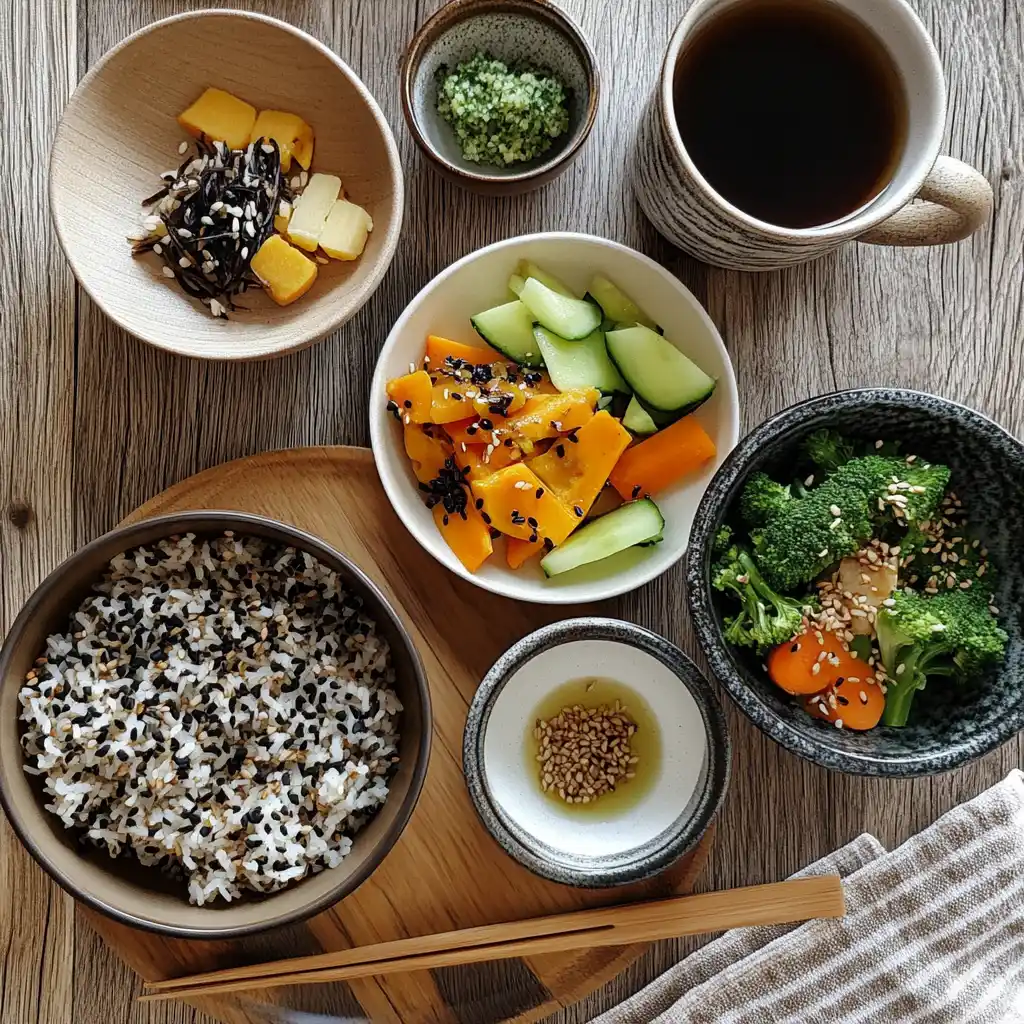
Remember: consistency is key. Drinking the Japanese Mounjaro recipe daily can be effective on its own, but pairing it with intentional food choices makes all the difference in long-term health.
PART 8: Natural vs Prescription Mounjaro: What’s the Difference?
Does Natural Mounjaro Actually Work?
There’s growing curiosity around whether the natural Japanese Mounjaro recipe can truly compare to prescription alternatives. The answer? It depends on your goals and how consistent you are with the natural route.
Natural Mounjaro—like the tea we’ve covered throughout this article—focuses on using ingredients such as roasted barley, fermented tea leaves, kombu, and dandelion root. These herbs promote metabolism, gut health, and energy balance over time.
On the other hand, prescription Mounjaro (a brand name for tirzepatide, a pharmaceutical medication) is designed to regulate insulin levels and control blood sugar, primarily for type 2 diabetes patients. Some also use it for weight loss under medical supervision.
Here’s how they compare:
| Feature | Natural Japanese Mounjaro Recipe | Prescription Mounjaro (Tirzepatide) |
|---|---|---|
| Source | Herbal, food-grade, plant-based | Synthetic pharmaceutical compound |
| Intended Use | Wellness, metabolism support, gentle detox | Diabetes control, weight management |
| Side Effects | Rare (bloating, sensitivity to herbs) | Possible nausea, GI issues, fatigue |
| Accessibility | Available online or homemade | Prescription only |
| Long-Term Safety | Safe with consistent, moderate use | Requires clinical monitoring |
Does it work?
Yes—but differently. Natural Mounjaro works slower and more holistically. It’s not a “magic” solution, but many users experience improvements in energy, digestion, and appetite control within 1–2 weeks of consistent use.
Looking for another natural approach to support energy and metabolism?
Don’t miss our Himalayan Pink Salt Weight Loss Trick, another remedy rooted in ancient tradition.
Scientific Insights vs Anecdotal Evidence
When comparing the Japanese Mounjaro recipe to prescription solutions, the discussion often comes down to data vs experience.
Scientific Studies:
Prescription Mounjaro has undergone clinical trials and FDA review. It’s backed by measurable results in blood sugar regulation and obesity treatment—but it’s also expensive and not without risk.
Natural Alternatives:
While there are fewer large-scale studies on herbal versions, many of the ingredients in the Japanese Mounjaro recipe—like ginger, fermented tea, and dandelion—have strong scientific backing for metabolic and digestive support.
| Ingredient | Backed Benefit | Source Type |
|---|---|---|
| Ginger | Thermogenic, anti-inflammatory | Clinical trials |
| Dandelion Root | Liver detox, appetite suppression | Lab studies |
| Kombu (seaweed) | Thyroid and gut microbiome support | Nutritional analysis |
| Fermented Tea | Fat oxidation, antioxidant-rich | Human trials |
User Testimonials:
What gives the Japanese Mounjaro recipe power is the consistency of anecdotal evidence. From wellness bloggers to tea drinkers on Reddit, users consistently report more regular digestion, reduced cravings, and lighter, more energized mornings.
Looking for inspiration? Try Pink Salt Trick Recipe to discover another gentle daily wellness hack.
PART 9: User Experiences and Success Stories
Real-Life Testimonials from Mounjaro Enthusiasts
Behind the growing popularity of the Japanese Mounjaro recipe are the voices of real people who’ve incorporated it into their wellness routines—and loved the results. These aren’t just quick reviews. They’re lifestyle shifts. From busy professionals to moms managing family health, this traditional recipe has found a home in countless cups around the world.
Let’s hear from a few of them:
Lisa, 42 – Atlanta, GA
“I started drinking the Japanese Mounjaro recipe every morning before breakfast. Within a week, my bloating went down and I noticed I wasn’t reaching for sugary snacks mid-morning anymore. I love the earthy taste, and it’s become a peaceful start to my day.”
Marcus, 33 – San Diego, CA
“As someone who works long hours, I needed a natural energy boost that didn’t leave me crashing. Mounjaro tea has made a difference—I’m more focused, my digestion has improved, and I’ve even dropped five pounds in a month without changing my workouts.”
Ari, 58 – Portland, OR
“I’m post-menopause and struggle with inflammation. The Japanese Mounjaro tea was something I added out of curiosity, but it’s now a staple. It eases my digestion and helps me feel lighter overall. Plus, it’s easy to make and doesn’t mess with my meds.”
These stories are echoed across forums, wellness blogs, and community pages where people share how a simple cup of tea transformed their approach to self-care.
Want another natural health hack that’s gaining traction online?
Check out Coffee Loophole Recipe that’s helping thousands manage energy and cravings.
Expert Thoughts and Nutritionist Opinions
While clinical trials are limited, several herbalists and holistic nutritionists support the daily use of the Japanese Mounjaro recipe, especially for those seeking non-pharmaceutical options for metabolic and digestive support.
Dr. Amy Nakagawa, Traditional Medicine Specialist
“The ingredients in this tea—kombu, roasted barley, fermented leaves—have been used in Japan for centuries. They’re naturally rich in fiber, minerals, and polyphenols. Together, they create a functional blend that supports the body’s internal systems.”
Jess Miller, Certified Nutritionist
“I always tell clients, consistency beats intensity. Drinking the Japanese Mounjaro recipe daily may not show dramatic weight loss in a week, but the improvements in digestion, energy, and bloating are very real. And those are the foundations of good health.”
Some nutritionists even recommend this tea alongside meal prepping and mindfulness exercises to promote full-body wellness.
Learn more about Healthy Meal Prep Guide for smart ways to support your Mounjaro tea habits.
Frequently Asked Questions (FAQs)
How do you make Japanese Mounjaro?
Check out Easy Natural Mounjaro Tea Recipe for a quick home version.
Does natural Mounjaro actually work?
Don’t miss our Lemon Balm Recipe for Weight Loss if you’re exploring additional natural remedies.
What is the Brazilian Mounjaro?
What do I eat in a day on Mounjaro Recipes?
Morning: Mounjaro tea + boiled eggs + apple
Lunch: Grilled protein + leafy greens + olive oil
Dinner: Steamed vegetables + quinoa or wild rice
Avoid processed sugar, heavy carbs, and greasy foods during your routine.
Looking for inspiration? Try Cherry Almond Breakfast Cookies as a light, nutritious snack option.
Conclusion
The Japanese Mounjaro recipe isn’t just a trend—it’s a timeless tradition that blends ancient wisdom with modern wellness. With its roots in Japanese herbal medicine, this natural tea offers a simple way to support your body from the inside out. From aiding digestion to enhancing energy and curbing cravings, its benefits extend well beyond the cup.
Unlike crash diets or chemical-heavy supplements, the Japanese Mounjaro recipe promotes balance, sustainability, and a return to mindful living. Whether you’re drinking it in the morning for a metabolism kick or in the evening to wind down, this tea is a gentle powerhouse.
Start slow. Brew with intention. And let the ritual become part of your routine.
Don’t miss our Best Natural Alternatives to Energy Drinks to complement your tea habits with more wholesome energy boosters.

